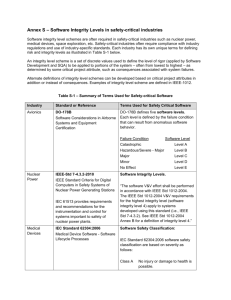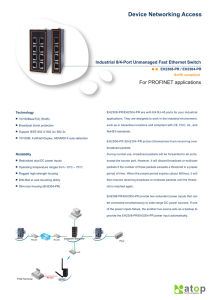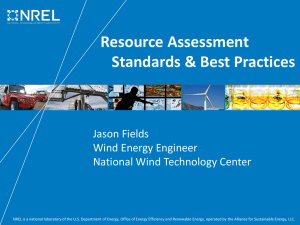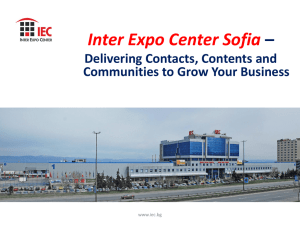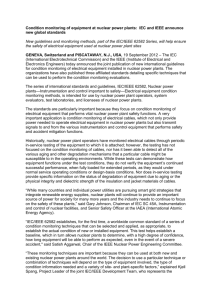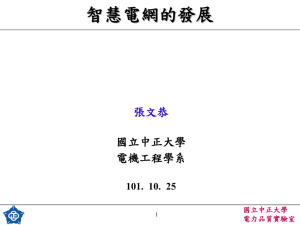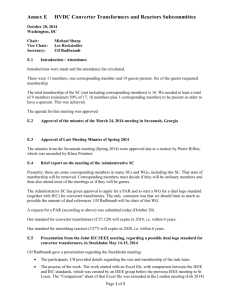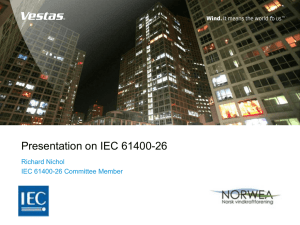PAP 7_Agenda_Grid Interop 2010
advertisement
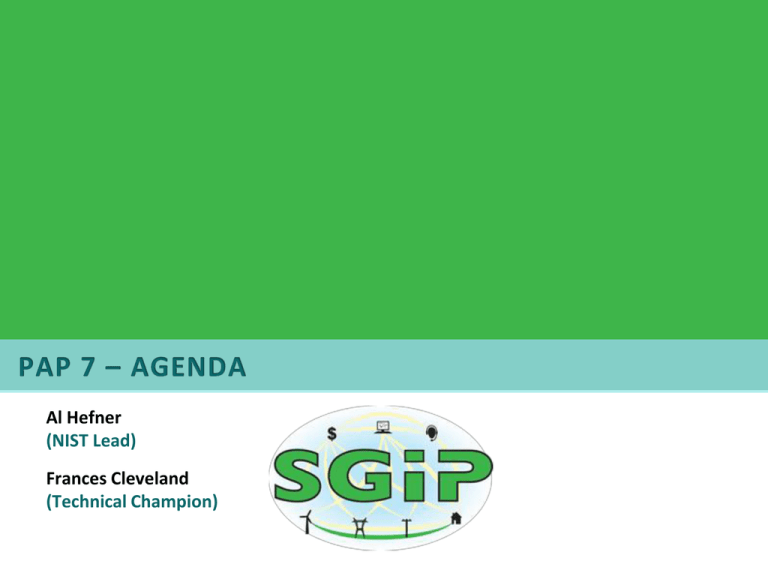
Al Hefner (NIST Lead) Frances Cleveland (Technical Champion) • • • • • PAP 7 Overview Status of IEC 61850-7-420 and IEEE 1547.8 Identify new issues for PAP 7 Update the Scoping Document Develop a White Paper based on Scoping Document PAP 7: Task Interactions Task 2: IEEE 1547.4 for island applications and IEEE 1547.6 for secondary networks MIC PAPs Task 4: Develop and Harmonize Object Models IEC 61850-7-420: Expanded to include Multifunctional ES-DER operational interface; Harmonized with CIM & MultiSpeak; Mapped to MMS, DNP3, web services, & SEP v2 3 PAP 7 Scope - Energy Storage and Distributed Energy Resources • Develop Scoping Study on Energy Storage and Distributed Energy Resources • Complete IEEE 1547.4 and .6 • Initiate IEEE 1547.8 on electrical connectivity of ES-DER allowing low-voltage ride-through, microgrids, and other ESDER management • Develop Use Cases for ES-DER • Develop information exchange requirements to submit to IEC TC57 WG17 • Monitor IEEE 1547.8 and IEC TC57 WG17 DER (Generation and Storage) Cost Justification • DERs will provide: • Energy (real power) from generators and from storage units • Reactive power support (volt/var support) to both distribution and transmission efficiency and stability • Combined generation and storage can provide rapid response to mitigate intermittent renewable resources like wind and solar • Low voltage ride-through, emergency reserves, harmonicdamping • Rapid response to frequency deviations Different DER Interactions: Direct Control, Interactive Requests, Broadcast/Multicast DER Key Use Cases Must Cope with Many Different Configurations • DER will be managed: • • • • By customers for their own exclusive use Through direct control by utilities or aggregators Through market-driven bids, with direct control by utilities Through market-driven, tariff-based demand response • Direct, tightly-coupled control • Between inverter controller and ES-DER device • Between Customer EMS and multiple ES-DER devices in a building, subdivision, or campus • Interactive two-way monitoring and control • Between ISO/RTO and ES-DER system whose bid has been accepted • Between Customer EMS and multiple ES-DER systems with their own (sophisticated) controllers • Broadcast/multicast one-way “pricing” or “request” signals • Between utility and Customer EMS • Between aggregator and ES-DER systems PV/Storage Inverter-based System Phase 1 Functions and Interactions Phase 1 Functions • Connect/Disconnect from grid • Limit maximum generation • Set power factor • Var settings, based on voltage • Var settings, based on watts • Storage charge / discharge rate (fast PEV chargers??) • “Pricing” signal • Event / history logging • State / status reporting • Time synchronization Interaction • Direct command • Immediate request • Change settings • Schedule of settings based on time • Schedule of settings based on temperature Phase 2 Functions • Low voltage ride-through!! • Counteracting frequency deviation • Other One PV/Storage Inverter Mode IEC 61850-7-420 for DER • IEC 61850 – Interface Standard of Object Models for Utility Industry • • • Very modular Establishes “well-known” standardized names, data formats, and services Initially focused on substation automation, but now being expanded • IEC 61850-7-420 for DER • • Addresses only the “Nouns” IEC 61850 object modeling constructs of LNs, etc: • Covers: • • • • • • Logical Devices (LD) Logical Nodes (LN) Logical Nodes Data Objects (DO) General DER management Common Data Data Classes (CDC) Common Class Photovoltaic systems CommonComponents Attributes Common Fuel cells Diesel generation Standard Data Types Combined heat and power Wind power is handled separately (IEC 61400-25) • Currently status is Final Draft International Standard (FDIS) • Due to become International Standard (IS) by mid-2008 Current Status • IEEE 1547.8 has its writing groups developing the first draft of the document • IEC 61850-90-7 is being developed as a Technical Report that contains all of the proposed ES-DER additions to IEC 61850-7-420 • TR IEC 61850-90-7 will be an informative document that can (hopefully) be approved by the IEC within 6 months • With this TR, vendors can start to implement IEC 61850-7-420 even though they recognize that some minor changes might be made • In parallel, these (and other) data objects will be added to IEC 61850-7-420 Ed 2 for normative standardization within 2 years • Develop a White Paper based on Scoping Document Questions?

